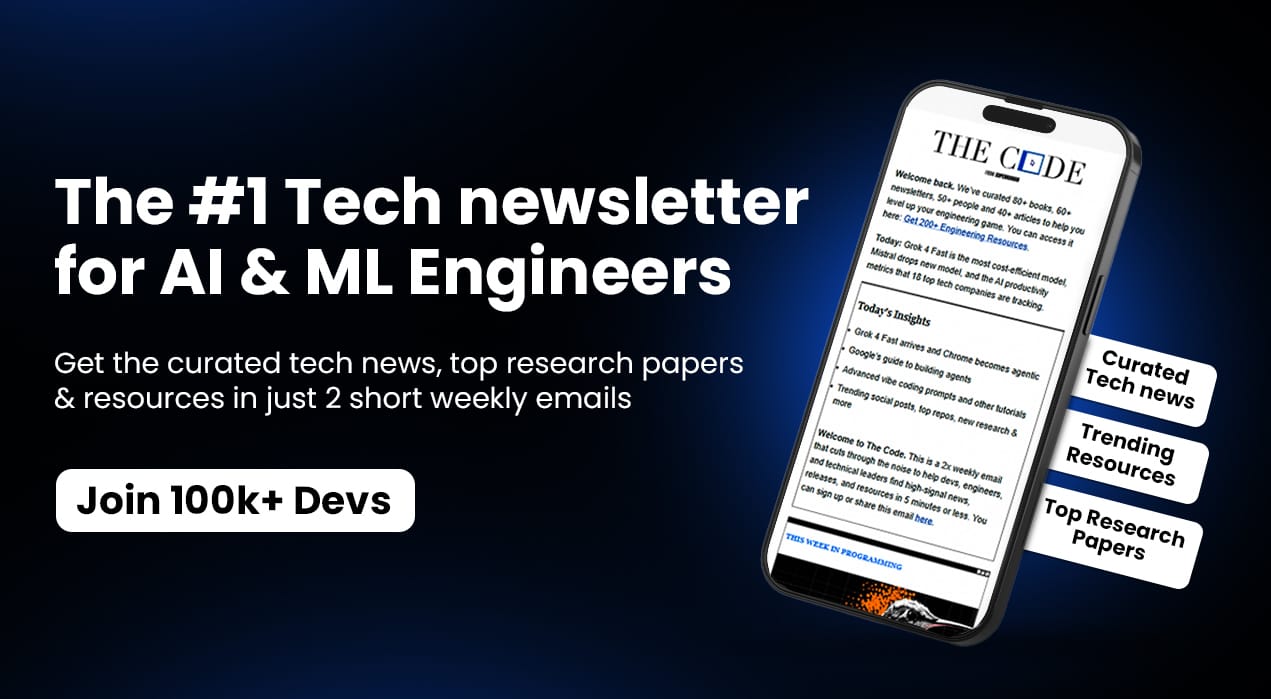Howdy 👋
Haaaave you met our friend Neville Medhora? He’s a copywriter who makes $1M+/yr with 0 employees and also helped skyrocket AppSumo’s email growth back in the day.

His playbook is dummy-proof on purpose: stack tiny experiments, run repeatable systems, and write great copy (hint: it’s easier than it looks).
In the next 6 minutes, you’ll learn:
Why small tests beat big bets
Copy habits you can steal today to become a better copywriter
The classic AIDA framework for words that sell
Let’s dive in.
Testing 1, 2, 3
Instead of putting everything into one big bet, Neville ran dozens of low-risk tests: buy a domain, put up a page, offer something, watch what happens, and set a 30-day deadline. From there, either kill it or keep it.
Most of us stall because we’re scared to fail in public. Thinking of your ideas as small “dumb” experiments lowers the stakes and gets you moving. Then you can let the data, not your ego, make the call.
Give each attempt 30 days. If no one buys or books with you, all good. That’s the market telling you something. Change one variable (offer, audience, price, or channel) and run it back.
Do a few impactful experiments and the wins start to stack.
Neville’s online rave gear business, HouseOfRave, paid off his college tuition. Shifting from emails full of product images to a plain text email with use cases gave him his first sales. And a single email rewrite delivered AppSumo’s first $10K profit day for the exact same product. Tiny tests, major momentum.

The original HouseOfRave website, circa 2006
Try it this week:
Pick one offer you can deliver today. Start small and pick something you can do well without a ton of prep/resources. That could be a landing page critique (record yourself walking through how to improve someone’s site), an ad setup (creating or optimizing a Facebook/Google Ads campaign), or a spreadsheet automation (building a template that saves people time).
Set a 30-day quota. Commit to 10 real pitches per week via DM or email. Track replies, calls, and wins. By the end of the month, you’ll have real data instead of just guessing what works.
Optimize one thing at a time. Fewer than three paid customers in 30 days? Don’t scrap everything. Change one variable and run back the 30-day cycle.

Copy that
Effective copy is the difference between someone scrolling right past you and someone hitting that glorious ‘Buy’ button. And for Neville, growing as a copywriter is all about practice.
Lucky for you, there are things you can start doing today.
Reverse engineer ads in the wild. Whenever you see an ad (billboard, IG, pre-roll), ask: Why did this hook me? How would I make it clearer or easier to act on? Neville does this constantly—on planes, in magazines, everywhere—so his “persuasion brain” gets free reps all day.
Keep a swipe file of great and terrible ads, emails, and landing pages. Tag by theme (headline, pricing, proof, layout). Neville keeps most of his swipe file as plain phone screenshots, then files the best ones into Google Keep. When you write, steal the structure, not the words.
“Whenever you're reading anything, whether it's a sales page or an email, most people aren't paying attention to it. They're reading kind of like a caveman. Imagine this kind of dumb, doesn't-care, bleary-eyed caveman—that's the way I read people's copy.”
Try reading your copy like a dumb caveman. “Huh?” = delete. “Why?” = clarify. “So what?” = add the outcome.
Copy great copy. Recreate classic ads/pages (e.g., Ogilvy’s Rolls-Royce ad or Volkswagen’s “Lemon”) by hand or rebuild them in Canva layer-by-layer. You’ll feel the rhythm, sentence length, and flow—and it sticks. (Grab even more examples from Neville’s site SwipeFile.)

The notorious ad that helped make Volkswagen a success in the United States. (source)
With enough practice, small tests and copy tweaks can become six-figure levers.
👉 Check out the full video with Neville here.
Write AID(A)

Neville loves the classic AIDA framework for writing copy. That’s Attention, Interest, Desire, Action. (Fun fact: it was invented in 1898 by advertising pioneer Elias St. Elmo Lewis.)
This article from HubSpot breaks it down really well:
Attention: Stop the scroll with a spicy hook: a bold promise, a weirdly specific stat, or a curiosity gap that makes them go “Wait, what?”
Interest: Hold their attention with 1–2 concrete benefits and a quick mini-story that shows how you’ll make their life better.
Desire: Build trust and “I want it” with social proof and before/after outcomes (case studies, testimonials, numbers, etc.).
Action: Make the next step obvious and low-friction with a strong CTA. Make “I want it” → “I’m getting it.”
Try using it in your AI prompts as part of your high-gravity words (e.g., “Write me email copy selling this product using the AIDA framework.”).
Tired of reading copy about copy? Watch Neville break down AIDA in this video.
What 100K+ Engineers Read to Stay Ahead
Your GitHub stars won't save you if you're behind on tech trends.
That's why over 100K engineers read The Code to spot what's coming next.
Get curated tech news, tools, and insights twice a week
Learn about emerging trends you can leverage at work in just 10 mins
Become the engineer who always knows what's next
What’s the best piece of copy you’ve seen in the wild? Reply and let us know.
❤️ & 🌮,
The AppSumo Team
P.S. Want to help a friend become a better entrepreneur every week? Send ’em over to Mind Your Business.
